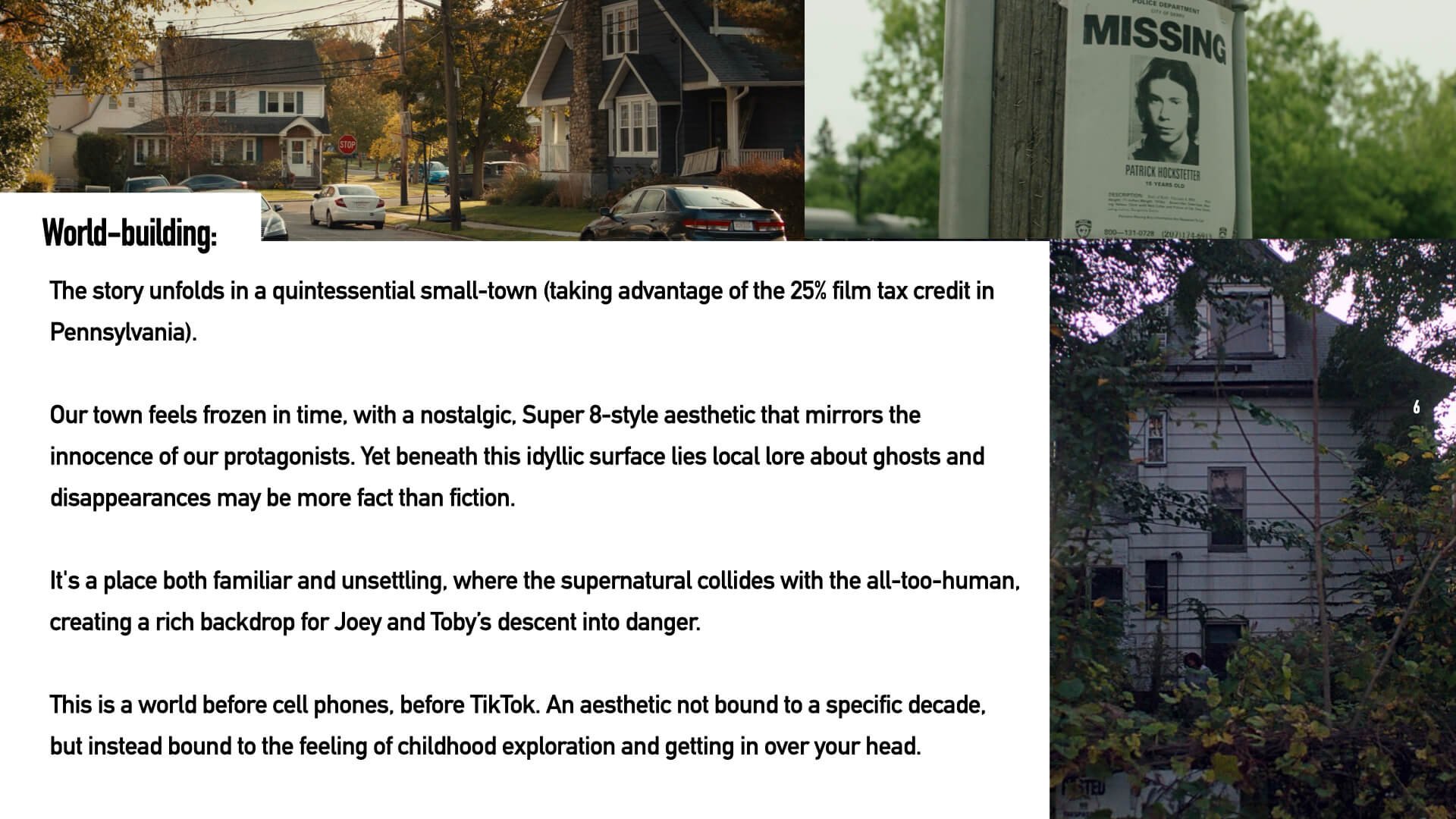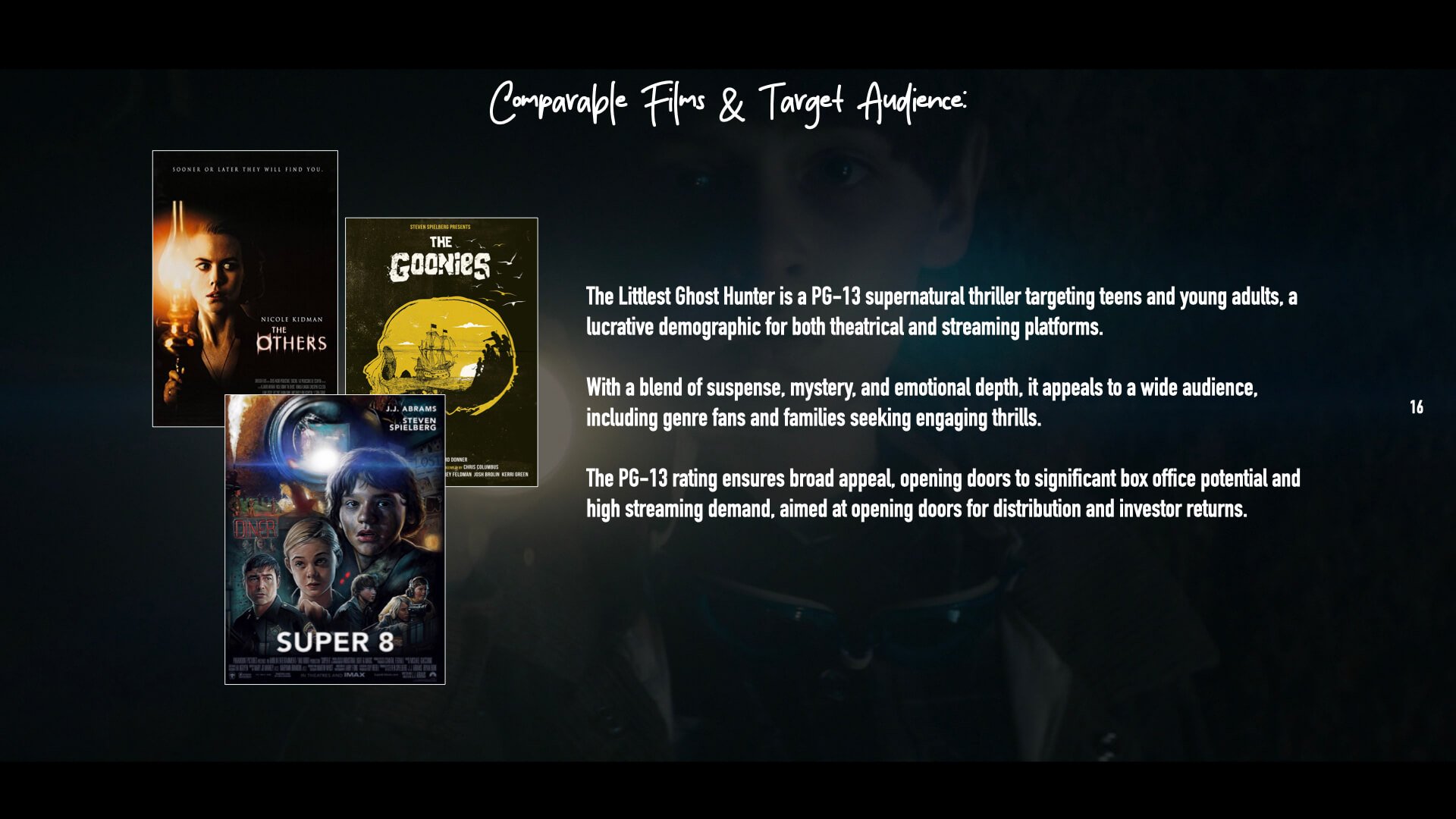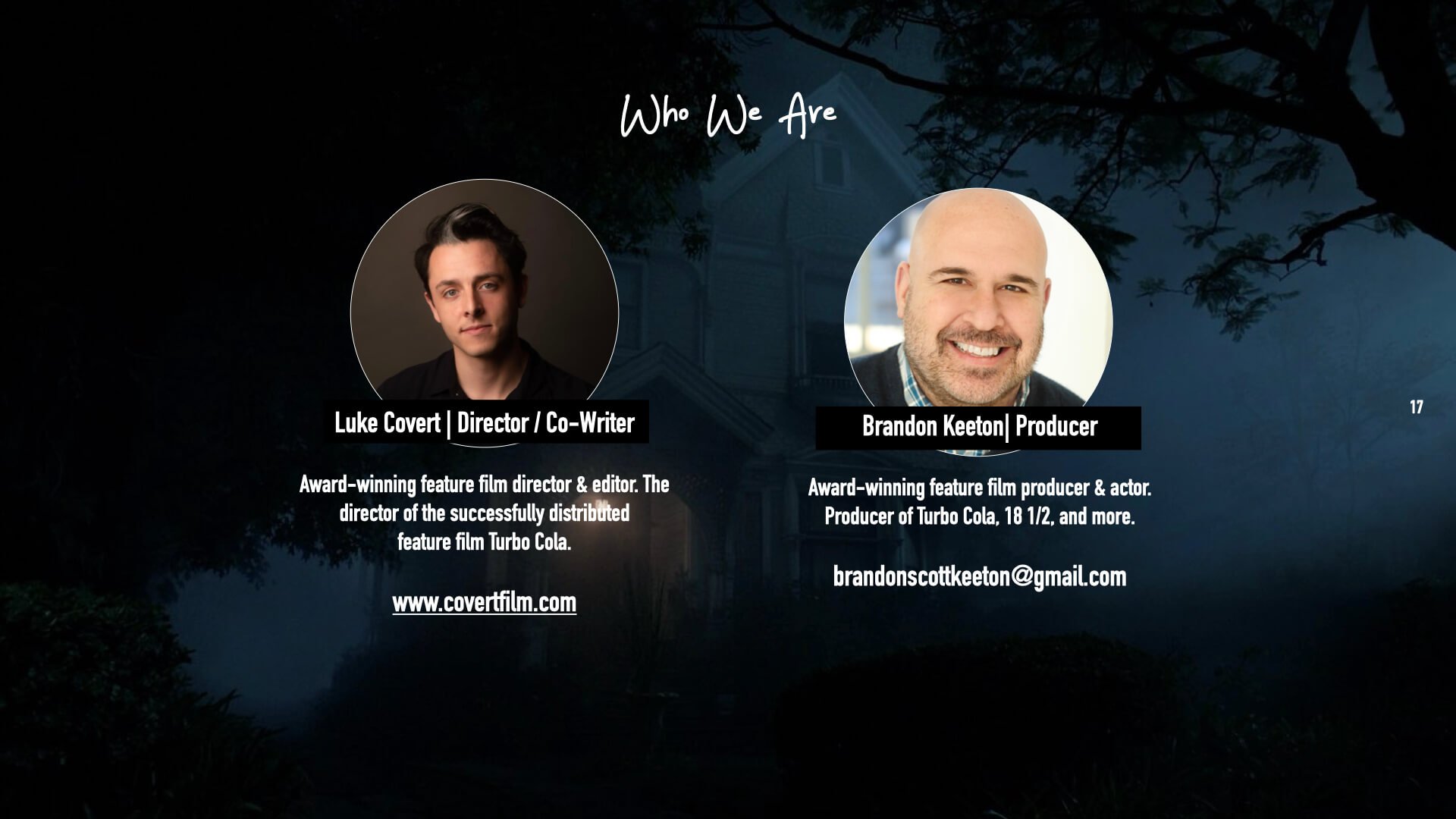The Dark Art of Business Video Production: Secrets Stolen from Feature Film Pitch Decks
There is a place where stories go to live or die.
It's not your local cinema, or the endless doom-scroll of social media feeds. And this stands true for both commercials and feature films. It's in the pitch deck - a collection of promises, possibilities, and creative prayers that us filmmakers pour our souls into, in hopes of turning dreams into reality.
I should know. I've just finished one. And I’d like to share it with you…
You see, dear reader, while you've been crafting gleaming testimonials and product showcases that pepper your website and social feeds - folks like me, with one toe across the line into the feature film world (see my first movie Turbo Cola) have been perfecting the art of making people with money believe in ghosts. Or superheroes. Or, in my case, ghost-hunting middle schoolers.
The principles, as it happens, are eerily similar.
The First Bit Matters: The Hook
In the world of feature films, we call it a LOGLINE. In your world, it’s the first five seconds of any video your businesses creates.
That first bit is the most important, and most difficult piece of any video or film.
In this case, ours took at least fifteen attempts. Here it is:
“Haunted by death, a middle schooler and his filmmaker friend chase the trutgh about the afterlife. But their journey into local legends unearths something far more real, more dangerous— and closer to home than they ever feared.”
A logline is the bit on the back of the DVD, or next to the thumbnail on Netflix. It’s the distillation of a 100-page screenplay in a single breath.
Your business videos need this same dark magic: the ability to make someone care within moments, before they can click away into the endless digital void.
World-Building in 60 Seconds:
There's a reason why the highly profitable business videos feel like stories, not infomercials. It's because they are.
But while we had a hundred pages to build our haunted world, you have precious seconds to build yours.
Think about the last time someone cornered you at a party to tell you about their revolutionary business opportunity. Now think about the last time someone told you a really good joke, or truly scary ghost story. There’s a difference.
When Apple shows you a phone, they don't start with processor speeds - they show you a mother watching her child's first steps from across an ocean. When Nike sells you shoes, they don't begin with the cushioning technology - they show you an athlete sweating at dawn, being the thing we all know we could be, if we were just a bit better.
We had a hundred pages to convince investors that a middle schooler hunting ghosts could be worth their money. You have fifteen seconds before your viewer's thumb decides your video's fate.
The trick isn't in the length of time you have - it's in what you do with it. Like a good sauce reduction, boil it down to its essence. What remains should make people forget they're being sold to, because they're too busy being enchanted.
Good film pitches don’t begin with budgets or market projections:
They begin with atmosphere. With the promise of a good story. We try to generate this response: "Tell me more."
Any corporate video, commercial, or brand documentary MUST perform the same trick.
When showcasing your services, your products, your "revolutionary business solutions" (a phrase that, like most ghosts, is often more air than substance), you must make them real. Touchable. Present.
Character & Conversion:
In feature films, we speak of characters. In business videos, you call them target audiences.
Your audience, like our characters, must go on a journey. They must transform from observers to participants, from skeptics to believers, from visitors to customers. This is where the real magic happens.
The Budget Dance:
Now we come to the part that makes both filmmakers and business owners flinch: how much is this video going to cost?
The truth about budgets, whether for a feature film or your next promotional video, is that they tell a story too. But unlike the stories we tell with cameras and lights, the numbers must be brutally honest. There's a certain dark comedy in this - the most fictional part of our work requires the most unflinching truth.
But you’re crazy to just ask for money without a plan. That’s why including a detailed schedule, shotlist, location agreements, and crew roster is key.
Comparison: Useful. Dangerous.
Perhaps the most practical magic lies in what we filmmakers call "comps" - carefully chosen comparative titles that say: "Remember that successful thing you liked? This is like that, but different."
In our pitch deck, we didn't compare The Littlest Ghost Hunter to obvious horror films. Instead, we pointed to stories about kids on bikes uncovering mysteries, adventures that made money while making audiences care. Think Stand By Me meets Ghostbusters, not The Conjuring Junior.
For your business videos, this same dark art applies. Study the videos your successful competitors make, but don't study to copy - study to understand why they work. Maybe that drone shot of their headquarters isn't just showing off their building. Maybe it's telling their audience: "We're established. We're here to stay. You can trust us."
But here's the trap: follow too closely in another's footsteps, and you'll be just another forgetable face in the crowd. The best business videos don't just repeat what worked before - they understand why it worked, then find their own path.
The Final Piece: Call to Action
In the end, every story - whether it's about ghost-hunting children or revolutionary business solutions - must ask something of its audience. Must make them feel not just entertained, but moved to action.
Your business videos, like our pitch decks, are not mere entertainment. They are invitations to adventure. To transformation. To transaction.
The Moral of the Story:
The truth is, whether you're pitching a feature film about supernatural investigations or creating a video about your company's quarterly innovations, you're really doing the same thing: you're telling a story that asks to be believed.
The tools may differ - steadicam shots versus handheld gimbals, interviews of CEOs vs dialogue from actors- but the magic remains the same. Make them care. Make them believe. Make them act.
And if all else fails, remember: there's always tiktok dances.
ABOUT THE AUTHOR:
Luke Covert is an award-winning feature film & commercial director whose work spans from ghost-hunting middle schoolers to Fortune 500 brands. His latest film won "Indie Movie of the Year," while his commercial projects for Microsoft, Uber, and others prove that business videos don't have to sacrifice story for sales. He runs Covert Film from Pennsylvania, serving clients nationwide.
Need help crafting your own business video magic? Let's talk about turning your company's story into something that not only captures attention but converts. Because in the end, that's what all this sorcery is about. | Luke@covertfilm.com
#BusinessVideoProduction #VideoMarketing #ContentStrategy #DigitalStorytelling











